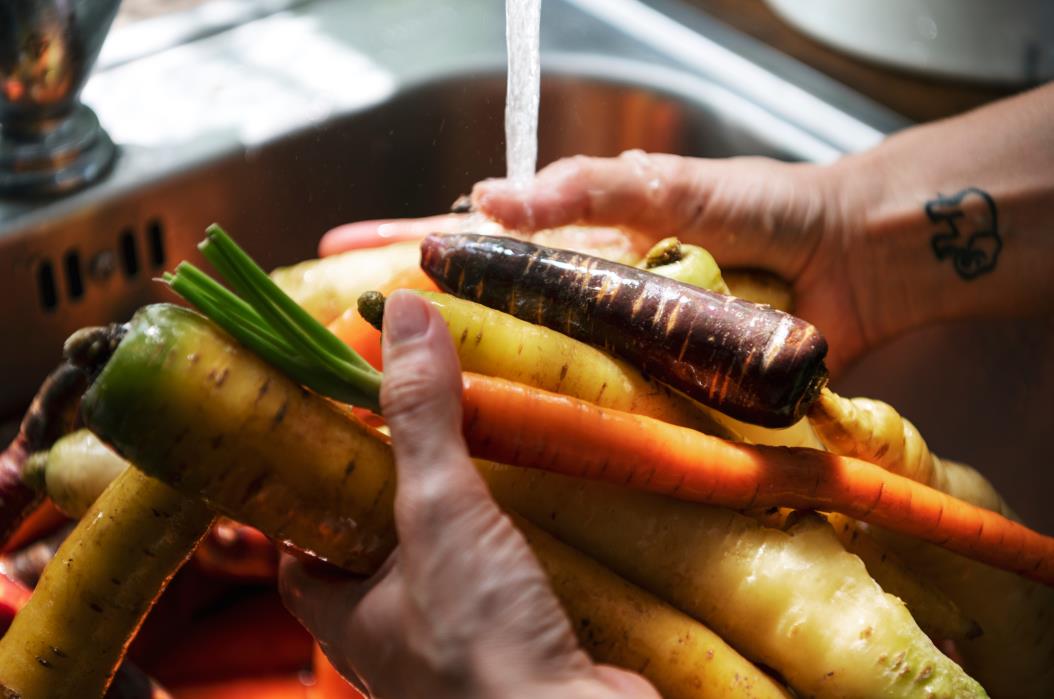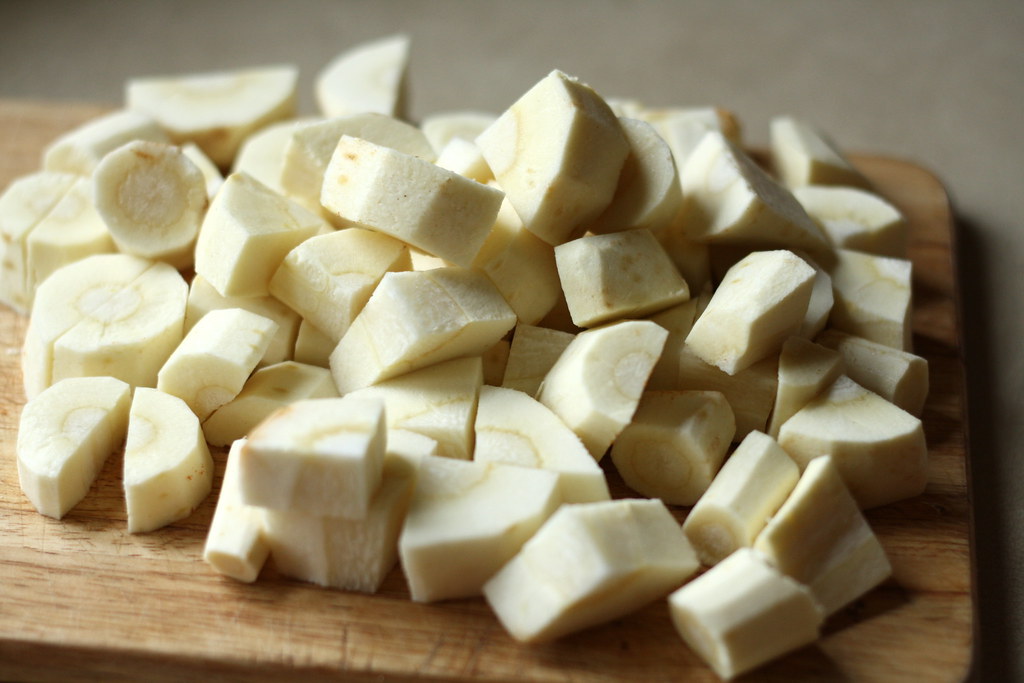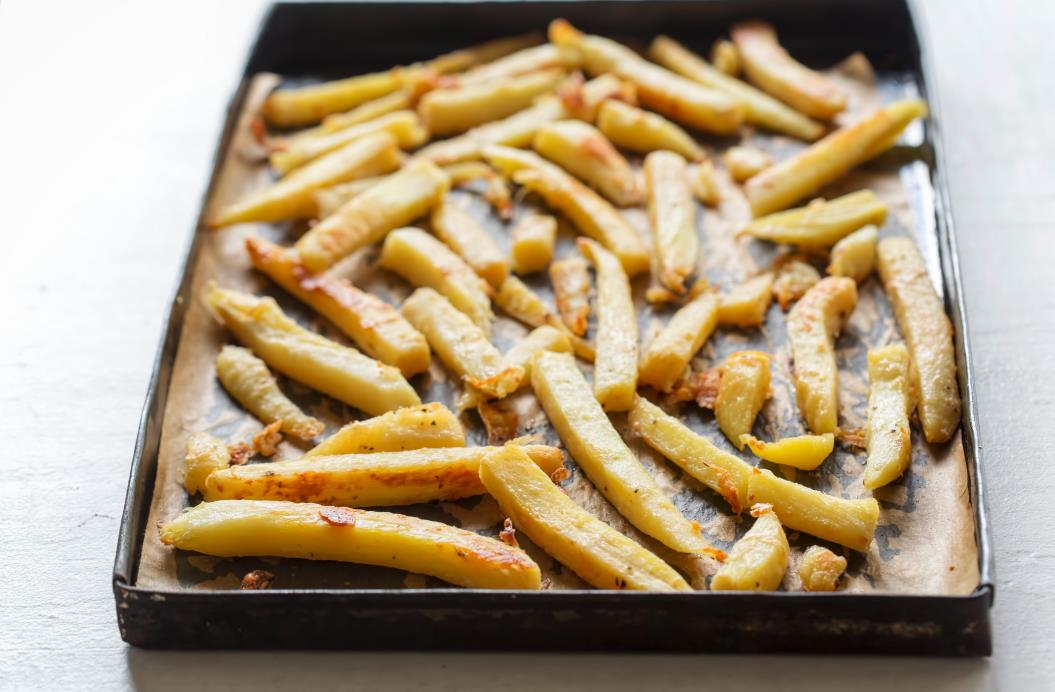Parsnips are a versatile root vegetable used in different culinary applications. Apart from being delicious, parsnips have rich nutritional value. These vegetables contain high dietary fiber that helps reduce cholesterol levels and vitamin C that helps boost immunity. Cutting parsnips may seem intimidating at first, but it’s a relatively easy task if you have the right tools and know-how.
The first step is to pick the best parsnips, clean, and peel. Use a vegetable peeler to remove the skin, then rinse under cold water to remove any dirt or debris. Next, use a sharp kitchen knife to remove the top and bottom end of the parsnip, then slice or trim the parsnips into your preferred size and shape.
Understanding how to cut parsnips the right way is the first step to making delicious and nutritious parsnip dishes. This article will discuss different cutting methods for cutting parsnips, including how to remove the parsnip core.
Table of contents
What are parsnips?
Parsnips (Pastinaca sativa) are a type of root vegetable belonging to the carrot family. They have a long, tapered shape and creamy white flesh with a slightly sweet taste.
Parsnips are rich in dietary fiber and contain high levels of essential vitamins, minerals, and antioxidants that help improve overall health. Eating parsnips can help regulate cholesterol levels, blood sugar levels, and bowel movements. They also have rich anti-fungal and anti-inflammatory properties that boost overall health and well-being.
The popularity of parsnips has grown in recent years, and they are now widely available in supermarkets and grocery stores. Most people cook parsnips; however, they are also a delicacy when eaten raw. Like carrots, you can choose to bake, boil, or roast parsnips to bring out their natural sweetness.
Preparation
Preparing parsnips requires chefs first to pick the right size and portion. You’ll also need to clean and peel the parsnips before cutting them into the desired shape or size.
Here’s a quick guide on how to pick, clean, and peel parsnips.
How to pick parsnips
When picking parsnips, look for small to medium-sized vegetables measuring about 5 to 10 inches long. They should have smooth, creamy white skin with no blemishes or discoloration. Ensure they are plump and firm, with no sign of bruising, discoloration, cuts, blemishes, or cracks.
Avoid parsnips that are shriveled, soft, or have a woody texture. These vegetables are past their prime and will not taste as good. Check the expiration date when buying packaged parsnips to ensure freshness. It’s advisable to consider purchasing organic parsnips, free of pesticides and other chemicals.
How to clean and peel parsnips

Before peeling parsnips, rinse them thoroughly under cold running water to remove dirt and debris. You can also use a vegetable brush to scrub any hardened dirt or debris. Once the parsnips are clean, you can proceed to peel them.
The easiest way to peel parsnips is using a sharp vegetable peeler or paring knife.
- Hold the vegetable peeler in your dominant hand and the bottom end of the parsnip in your less dominant hand.
- Peel from top to bottom in long, smooth strokes, moving around the vegetable as you go.
- If using a knife, hold the vegetable firmly in place with your non-dominant hand, make a shallow cut straight down one side of the parsnip, and then pull off the skin.
- Cut the top and bottom ends using a sharp chef’s knife, then slice or trim the parsnip into your desired size and shape.
Vegetable peelers work best because they remove only the outer layer of the skin without taking too much flesh off the parsnip.
Handpicked for you
True cutting power in the palm of your hand
How to cut parsnips
A clean and well-peeled parsnip is now ready to be cut. Depending on your recipe or culinary needs, you may need to slice the parsnips into julienne cuts, dice them, or cut them into French fry shapes.
Here are some quick and easy cutting methods for parsnips:
How to julienne parsnips
Julienne cuts are thin matchstick-sized strips about 2 to 3 inches long.
- Cut the peeled parsnip lengthwise: Make a deep cut into the thick end of the parsnip, and slice towards the narrow end. Split the parsnips into two halves with flat-cut sides.
- Divide the halves into two: Position the parsnips on the cutting board, with the flat side facing down. Cut the parsnips crosswise into two equal pieces measuring about 2 to 3 inches long.
- Slice the parsnips into matchstick-size strips: Slice the parsnips lengthwise into thin strips measuring about 1/2-inch thick.
- Cut the thicker pieces into halves: The wider bottom half may need to be cut into halves or smaller pieces, so all the strips are equal in thickness. If you think of any other thicker pieces, cut them into halves.
How to dice parsnips

Dicing is a small rectangular or square cut about 1/2-inch thick and 1/2-inch wide. Diced parsnips are a great addition to stews, braises, or rich pasta dishes.
- Cut the parsnips lengthwise: Slice the parsnips in half lengthwise, then slice each half into halves to achieve quarters of the same size.
- Bundle and cut the parsnips into cubes: Bundle the quarters together and chop them into small pieces.
If you need smaller or bigger dice, adjust the size of your cuts accordingly. Remember that all the pieces should be uniform in size for even cooking.
How to cut parsnips into French fry shapes
In your favorite French fry recipe, you can replace potatoes with parsnips or try a new twist on the classic side dish by using parsnip fries.
- Start by cutting the peeled parsnips into pencil-sized strips. Cut the strips lengthwise into quarters, then bundle and cut them crosswise to achieve small French fry shapes, preferably 1/2-inch long and 1/2-inch thick.
- Cut the pencil-sized strips into halves instead of quarters to get even bigger French fries. Remember to adjust the thickness of your cuts according to your recipe.
- Proceed to cook the parsnips according to your recipe.
How to cut parsnip disks
Disks on the Bias are small disks about 1/4 to 3/4 inches thick. They are great for roasting, grilling, or pan-frying because the edges caramelize and crisp up during cooking.
Follow these steps to cut disks on the bias:
- Position the peeled parsnip securely on the cutting board. Hold the knife with your dominant hand and the thicker side of the parsnip with your less dominant hand.
- Hold the knife at a 45-degree angle towards the narrow end of the parsnip. Ensure you angle the knife towards the center of your body as you cut.
- Space the disks about 1/4 to 3/4 inches apart, depending on the size of your parsnips and cooking method.
Recipes that require disk parsnips don’t require coring. Cutting disks on the bias gives parsnips a wider surface area, making them perfect for roasting and grilling.
How to cut parsnips core
The parsnip core is the hard, woody portion of the parsnip right beneath the thick skin. It has minimal flavor, so you can cut it off and discard it or save it for making stock.
To remove the core from a parsnip:
- Quarter the parsnips lengthwise: Slice the parsnips in half lengthwise, then slice each half into halves.
- Position the parsnip quarters on the cutting board with the core side facing up: Try to stabilize the parsnips so they don’t move around as you cut. Hold the thicker end of the parsnip with your non-dominant hand.
- Trim off the core: Use a paring knife or a vegetable peeler to scrape off the core, starting from the thicker end and working your way down. Target the base of the core, where it meets the parsnip flesh.
- Discard the core: For a tender, uniform finished product, discard the core and use only the rest of your parsnip.
Be careful when coring parsnips because the cores tend to have a tough texture. Take your time and be gentle, so you don’t accidentally slip and cut yourself.
How to eat parsnips
While you can eat raw parsnips, the tough texture and slightly bitter taste make them more palatable when cooked. You can choose to either roast, fry, or puree your parsnips. Some chefs recommend pairing them with sweeter or nuttier flavors, such as apples, ginger, and hazelnuts.
Roasted parsnips

Enjoy the natural sweetness of roasted parsnips by coating them in oil and roasting them in a hot oven. You can parboil and drain them first if you prefer veggies extra-crispy.
Roast them over 400 degrees Fahrenheit for an hour or until they’re fork-tender. You can also roast your parsnips alongside other vegetables such as carrots, potatoes, and onions.
Fried parsnips
French fries paved the way for the popularity of fried parsnips. To get that perfect golden-brown color and crispy texture, fry your parsnips in a combination of oil and butter. You can combine the butter with flour and salt to create a batter, or simply season the parsnips with salt and pepper.
Deep-frying is the most popular method for frying parsnips, but you can also shallow-fry them in a pan. Enjoy the fried parsnips with ketchup, mayonnaise, or your favorite dipping sauce.
Soups, casseroles, and stews

Casseroles and stews are comfort food staples, and adding parsnips to them can give them a slight sweetness and extra creaminess. You can also use parsnips in soups as a thickener or add them to smoothies for a nutrient boost. Try saute sliced parsnips with garlic and olive oil as a simple side dish.
How to Cut Parsnips (FAQs)
Do you have to cut the core out of a parsnip?
You don’t always have to cut the core out of a parsnip, but it’s generally recommended. The core can be tough and woody, so it’s best to remove it before cooking. However, some recipes that require parsnip disks or even whole parsnips may call for leaving the core intact.
Can you eat the skins of parsnips?
Parsnip skins are edible, but they contain natural toxins that, when eaten in excess, can cause diarrhea, vomiting, and other digestive issues. It’s best to peel the skins off before cooking or eating parsnips.
Are parsnips and carrots related?
Parsnips are in the same family as carrots, but they’re not the same vegetable. Carrots are orange due to their high beta-carotene content, while parsnips have a creamy white or light yellow color. Parsnips are also smaller and have a more fibrous texture compared to carrots.
Closing
Learning how to cut parsnips is a simple but essential skill for any home cook. The type of cut will depend on how you plan to cook them. You can enjoy them roasted, fried, pureed, or added to soups, stews, and casseroles.
For more information on different vegetable cuts, visit our blog or check out some other cooking resources. You can also shop for high-quality handmade kitchen knives from our store.












